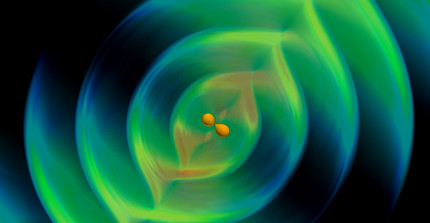Gravitational Wave Modelling
Due to the finite size and internal structure of neutron stars, gravitational waveform modells describing the binary neutron star coalescence need to incorporate the tidal deformation of the stars in their companions' external gravitational field. Over the last years, there has been significant progress in modelling binary neutron star systems capturing the strong-gravity and tidally dominated regime of the late-inspiral. To date, there exist at least three different types of tidal approximants for the inspiral GW signal: analytical Post-Newtonian modells, semi-analytical waveforms based on the effective-one-body approach, and closed-form approximants derived partially from numerical relativity data (NRTidal).
Our group has proposed the usage of the NRTidal framework for the analysis of compact binary systems and is leading the field in the phenomenological waveform modelling of binary neutron star and black hole-neutron star systems. In fact, due to its accuracy and computational efficiency, the NRTidal approximant is to-date the standard modell to describe binary neutron star systems within the LIGO Scientific- and Virgo-Collaboration and is also used outside the LVC for analyses. It was directly employed for the interpretation of the first and second binary neutron star detection and has shown its potential to predict the source properties and to place constraints on the equation of state of supranuclear dense matter.

